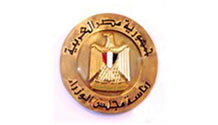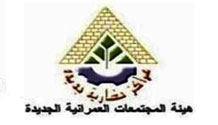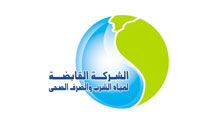Drilling & heavy equipment Facilitates almost all activities for infrastructure projects (water and wastewater-energy and electricity –construction – transportation and logistics – waste management even IT and communications).
Infra Africa & middle East show provides producers, suppliers , and trade agencies of heavy equipment and machineries a unique opportunity to show their products and services to their target customers
At Infra Africa & Middle East show you will communicate and interact with buyers from Egypt, Africa and Middle East.
The growth in infrastructure investments in those markets reflects positively on the projection of market needs for heavy equipments and machineries.
Drilling equipment
Drilling equipment are used in water well,Construction foundation and gas & oil discovery projects
For the new agricultural communities in Egypt drilling equipment are the major component to find water wells forthe reclamation of one and a half million Fidans project
Egypt has finished of digging 355 water wells to reclaim 80 thousands feddans in Farafra ,EinDala and Tushka in the south west of the region .
Also it designed and excuted a well working with the solar energy of 120cubic meter/hour and made an underground canal to transfer the agricultural and drinking water under the new suez canal.
Egypt has four main groundwater aquifers: the Nile Aquifer, the Nubian Sandstone Aquifer, the Moghra Aquifer between the West of the Nile Delta and the Qattara Depression, and coastal aquifers on the North-Western coast. The Nile Aquifer, the Moghra Aquifer and the Coastal Aquifer are renewable. The Nubian Sandstone Aquifer System which contains 150,000 billion m³ of freshwater, equivalent to almost 3,000 times the annual flow of the Nile, is non-renewable. It is shared with Sudan, Chad and Libya
DIFFERENT TYPES OF DRILLING AND ITS BRIEF DESCRIPTION
There are a variety of drill mechanisms which can be used to sink a borehole into the ground. Each has its advantages and disadvantages, in terms of the depth to which it can drill, the type of sample returned, the costs involved and penetration rates achieved. There are two basic types of drills: drills which produce rock chips, and drills which produce core samples.
- Auger drilling
Auger drilling is done with a helical screw which is driven into the ground with rotation;it can be used for environmental drilling, geotechnical drilling, soil engineering and geochemistry reconnaissance work in exploration for mineral deposits. . In some cases, mine shafts are dug with auger drills. large augers used for sinking piles for bridge foundations. - Percussion rotary air blast drilling (RAB)
RAB drilling is used primarily for mineral exploration, water bore drilling and blast-hole drilling in mines, as well as for other applications such as engineering, etc. - Air core drilling
Air core drilling and related methods use hardened steel or tungsten blades to bore a hole into unconsolidated ground. Air core drilling can achieve depths approaching 300 meters in good conditions. - Cable tool drilling
Cable tool rigs are a traditional way of drilling water wells. The majority of large diameter water supply wells, especially deep wells completed in bedrock aquifers, were completed using this drilling method.
A cable tool rig can drill 25 feet (7.6 m) to 60 feet (18 m) of hard rock a day. A newer rotary drillcat top head rig equipped with down-the-hole (DTH) hammer can drill 500 feet (150 m) or more per day, depending on size and formation hardness. - Reverse circulation (RC) drilling
RC drilling utilizes much larger rigs and machinery and depths of up to 500 meters are routinely achieved. RC drilling ideally produces dry rock chips, as large air compressors dry the rock out ahead of the advancing drill bit. RC drilling is slower and costlier but achieves better penetration than RAB or air core drilling; it is cheaper than diamond coring and is thus preferred for most mineral exploration work - Diamond core drilling
Diamond core drilling (exploration diamond drilling) utilizes an annular diamond-impregnated drill bit attached to the end of hollow drill rods to cut a cylindrical core of solid rock. Drilling of 1200 to 1800 metres is common and at these depths, ground is mainly hard rock - Direct push rigs
Direct push rigs include both cone penetration testing (CPT) rigs and direct push sampling rigs such as a PowerProbeor Geoprobe. Direct push rigs typically are limited to drilling in unconsolidated soil materials and very soft rock.
In ideal conditions, CPT rigs can achieve production rates of up to 250–300 meters per day.
Direct push techniques are generally limited to shallow soil sample recovery in unconsolidated soil materials. The advantage of direct push technology is that in the right soil type it can produce a large number of high quality samples quickly and cheaply, generally from 50 to 75 meters per day. Rather than hammering, direct push can also be combined with sonic (vibratory) methods to increase drill efficiency. - Hydraulic rotary drilling
Oil well drilling utilises tri-cone roller, carbide embedded, fixed-cutter diamond, or diamond-impregnated drill bits to wear away at the cutting face. - Sonic (vibratory) drilling
A sonic drill head works by sending high frequency resonant vibrations down the drill string to the drill bit, while the operator controls these frequencies to suit the specific conditions of the soil/rock geology.
Now is the most relevant timing for promoting your products and services investing the booming of the construction market.Infra Africa & Middle East show gives your company this chance














